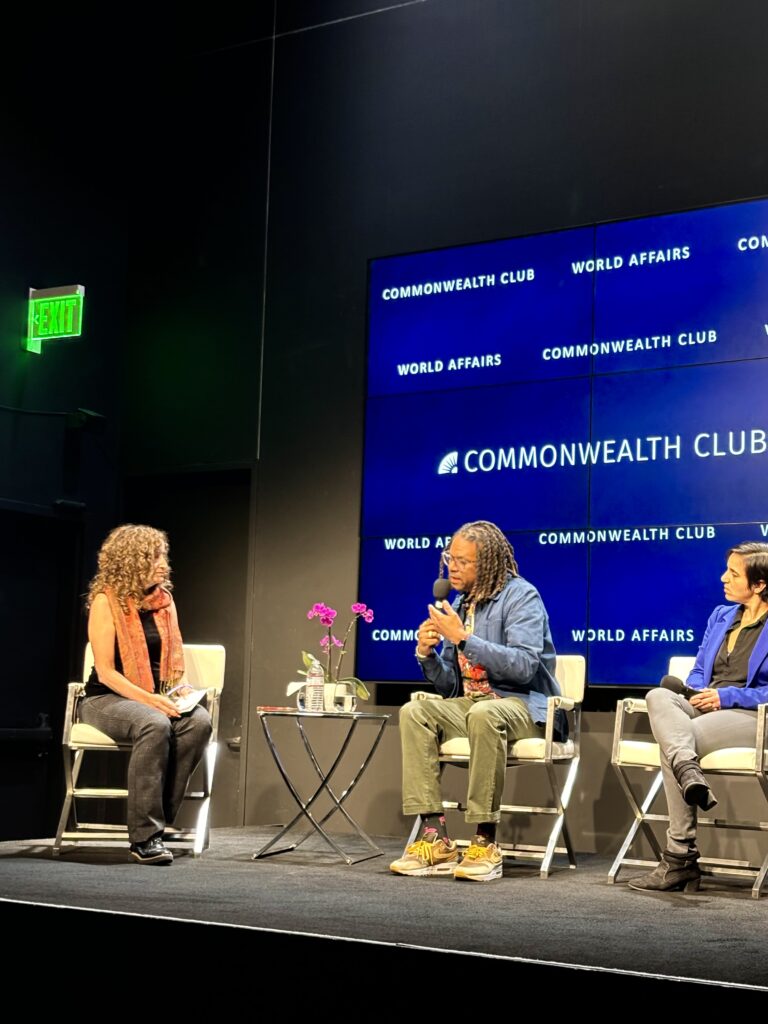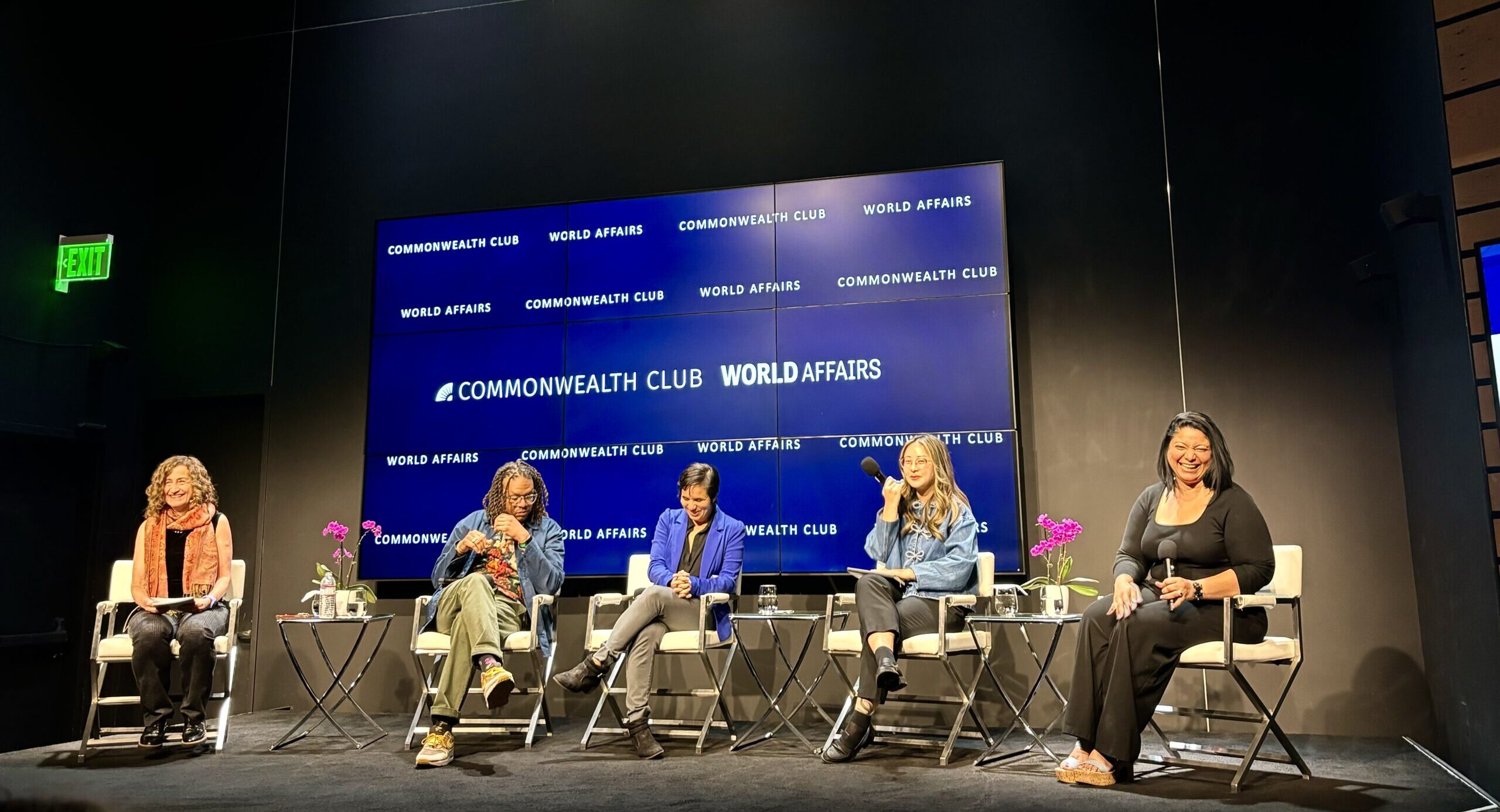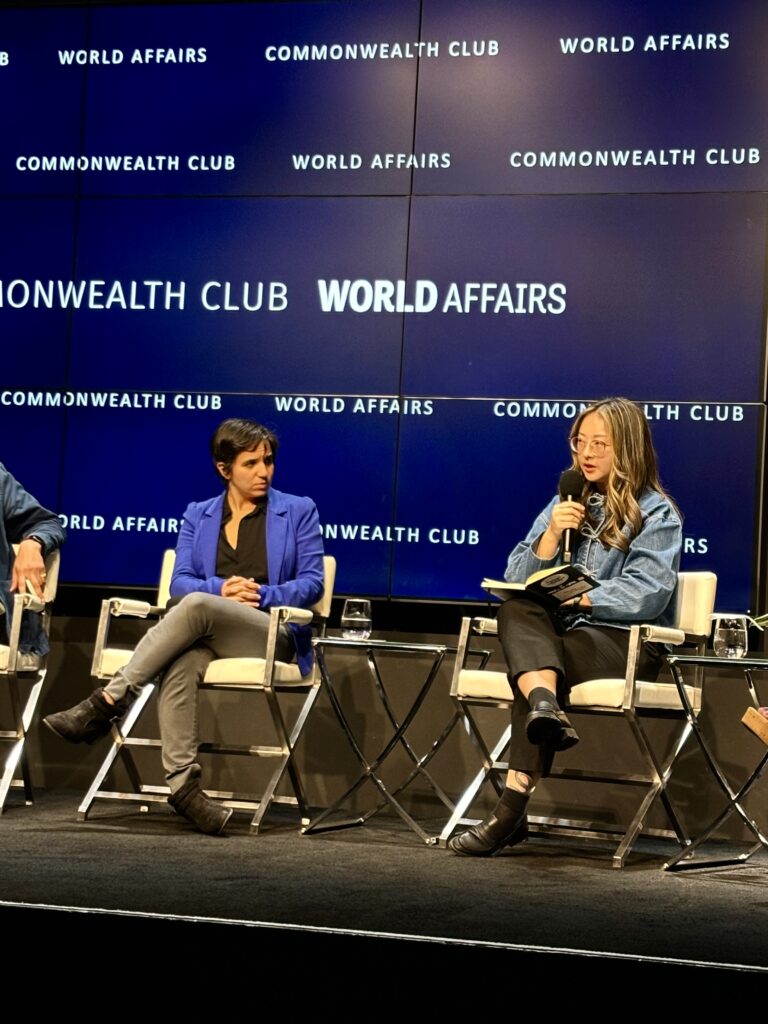Journalists nationwide are fighting domestic violence by focusing on solutions for survivors before the cycle turns deadly.
Every year, over 10 million people in the U.S. experience domestic violence, amounting to nearly 20 people physically abused by a partner every minute.
Over a third of U.S. women (35.6%) and over a quarter of men (28.5%) will experience rape, physical violence or stalking by an intimate partner in their lifetime.
“Domestic violence is everywhere, but it’s not inevitable, and how you tell survivors’ stories makes the difference between sensationalism and genuine understanding” — for instance, of the role of financial abuse and homelessness, said Debbie I. Chang, President and CEO of Blue Shield of California Foundation, at a Friday, October 25 panel at San Francisco’s Commonwealth Club, hosted by Blue Shield, about journalists expanding domestic violence narratives.
Financial abuse is involved in 99% of domestic violence cases.
Domestic abuse is the immediate cause of homelessness for 57% of unhoused U.S. women, and a major cause for 80% of those with a child in their care.
“When we use language that minimizes domestic violence, we minimize the issue,” said journalist and domestic violence activist Rachel Snyder. “For instance, using the term ‘domestic dispute,’ writing off children as unharmed or interviewing a neighbor who says ‘But he seemed so nice,’ instead of a family member or friend of the victim who can say ‘She was scared.’”
“Norms are shaped by media. Of course, we want to recognize the victims who have been murdered due to violence. When I was 16, when my abuser would lay his hands on me that I thought I was going to die,” said domestic violence writer and survivor Angela Kim.
“But my perception of domestic violence was really shaped by all these headlines of victims being murdered, and I just grew more and more terrified to leave every day,” she continued. “Journalists need to shed light on more covert domestic violence by showing how it thrives in ambiguity.”
She added that journalism can often make matters worse by presenting domestic violence stories as isolated incidents, rather than being contextualized around social issues and power dynamics, especially those impacting youth.
For example, although 57% of U.S. college students who report experiencing dating violence and abuse said it occurred during college, 57% of college students overall say it’s difficult to identify dating abuse.
“There’s a lot that young people go through that makes it hard to learn healthy behaviors,” said Kim. “While I was witnessing relationship abuse, I was also witnessing domestic violence in the home, as a child with a learning disability living with an immigrant family below the federal poverty line, which did not speak English well, and which was also Catholic, and so couldn’t divorce.”
“At the end of the day, journalists can walk away from all that and go home to their families, but the interviewee is often left with more nightmares. This is why it’s so important to be mindful of the power dynamics with the survivors you interview, or else you may end up replicating those cycles of violence,” she continued.
Awareness of these journalistic power dynamics are especially key to survivors’ healing given that many who experience domestic violence never find justice through traditional routes, like the court system.
Federal data indicates that only half of domestic violence incidents are reported at all, while the vast majority, while nationally representative data indicates that less than 2% of domestic violence offenders receive any jail time.

“I had taken pictures, and my own case still never got a court date. How could that vindicate me?” said domestic violence writer and survivor Yenni Rivera. “I couldn’t think about my own healing without also thinking of my child’s, and making sure he didn’t fall into patterns of becoming or accepting an aggressor … especially when he and his father did connect.”
Research suggests that one of the strongest predictors of committing domestic violence is having witnessed it in childhood.
“In Spanish, there is a saying that means: ‘From love to hate, it’s just one step,’” Rivera explained. “If you show the abuser that created a crime, also show what caused that — who they and their parents are, what community they were raised in, whether their friends or colleagues were blind to it … We should be able to see it, because the only way to break the cycle is to understand where it begins.”
“Journalists sometimes report things black-and-white, with a clear cast of characters — the victim, the abuser, the cops and judges,” said Michelle Levander, editor and founding director of the University of Southern California Annenberg Center for Health Journalism.
“But many communities may mistrust the legal system,” she continued. “To bring change from lawmakers, we have to approach domestic violence not as a one-day crime story but a public health epidemic.”
Domestic violence survivors are three times more likely to meet PTSD criteria, develop a major depressive disorder, engage in self-harming behaviors, be diagnosed with an anxiety disorder and have suicidal thoughts than the general population.
“We are spending so much money and time on policing and mental health services after the fact, when we can do so much more on the front end,” said Otis R. Taylor, Jr., managing editor of news and enterprise for KQED in San Francisco. “I think this requires a raising of expectations for stories’ depth, and making space for reporters to meet them.”
“In 2025, KQED will be reporting on domestic violence regularly, but we won’t just focus on someone being sentenced for killing their partner. What’s often missing in those stories are real people on the street — neighbors, friends, coworkers who have experienced that violence,” he continued. “A lot of this hurdle involves journalists not having the space to tell stories outside their comfort zone.”
“As a reporter, I’ve so often had to fight for that space, because centering humans in a trauma-informed way takes so much time and care,” said Sammy Caiola, special projects reporter for Kensington Voice in Philadelphia.
After training in traditional newsrooms, Caiola has been breaking old-school journalistic models of one-sided information-gathering by collaborating with her sources on building their stories.
“Survivors often feel they’ve lost control, and journalists who work with them have a role in helping them regain some of it through a journalistic process that that empowers rather than extracts,” she said, adding that she does this by reading quotes back to sources, asking them what they need to feel safe during the interview and asking them what questions they’d want answered for her own upcoming interviews like law enforcement.
“I also ask people at the start of an interview: ‘Why are you doing this? What do you want to get out of it ?” Caiola continued. “Once, they said ‘I just want the next person who goes through this to understand the system better than I did, because I just didn’t know what to do,’ so and we produced a digital guide to reporting sexual assault in Sacramento County.”
“I’ve talked to survivors who said ‘If we’re going to do this, please don’t change the day on me, because I’m going to make a therapy appointment,’ or ‘I’m not going to work,’” she added. “That helped me realize: This is not just a conversation for you. This is your health.”





